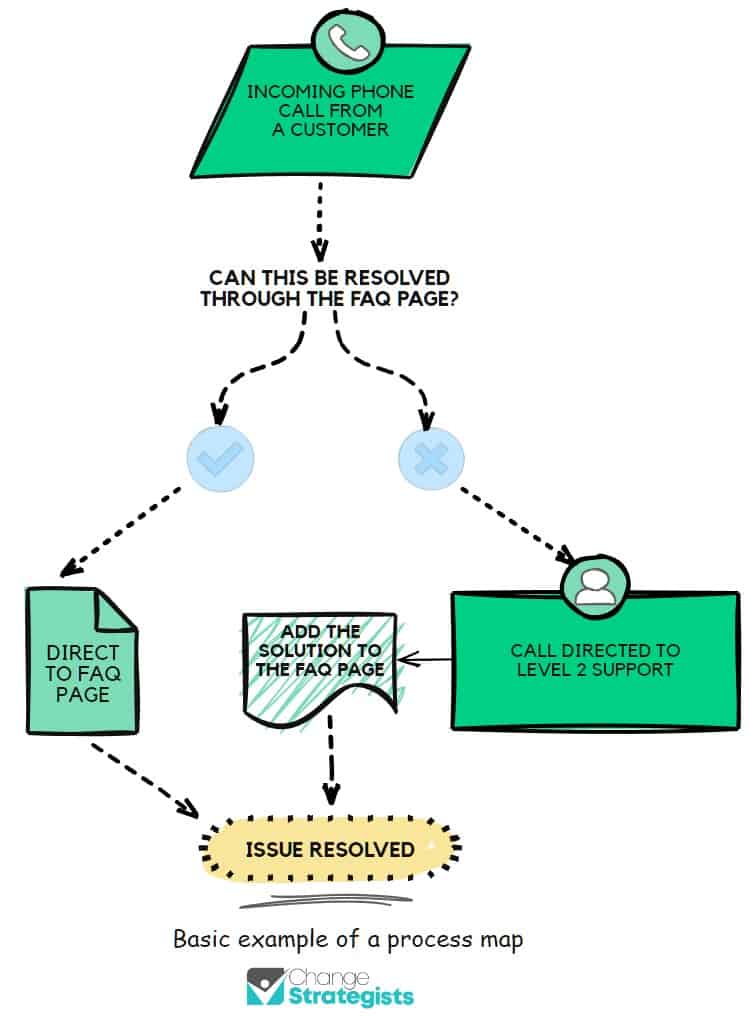Introducing changes to the way your business operates can be a difficult and daunting task for employees. They may feel anxious or concerned about their jobs, especially if the change is significant.
Proper training of employees prior to implementing changes will help ensure a smooth transition and prevent any disruptions in productivity.
By following these steps, you can train your employees effectively and minimize any negative impact on your business.
Define the goals of the change
Before beginning any type of training, it is important that you first define what goals need to be met with the change. What are you trying to achieve?
Once you have a clear understanding of this, you can develop a plan on how best to communicate these goals to your team.
Create appropriate training material
In order to prepare employees for change, it’s important to have effective training material that your team can use to educate and answer questions regarding the change.
Some key things to consider when creating training materials include:
- What are the goals of the change?
- How will the change impact employees?
- How long until the change has been completed
The types of material you should consider include:
- Group presentations/training sessions
- Written material, e.g. handouts, cheat sheets, information on intranet
- Posters
- Online course
Encouraging an attitude of growth and development during times of change is important for ensuring that employees are able to adapt to the new changes.
This can be done by setting expectations, providing support, and offering training opportunities. Employees should feel like they can grow with the company, even during difficult times.

Train ALL employees
All too often, only managers or key members of staff are trained on new procedures before they’re implemented company-wide.
This creates an uneven playing field and leaves other workers feeling like they’re at a disadvantage. It’s essential that everyone receives the same level of training so that no one feels left out or unprepared.
Make sure there is adequate support available
Once changes have been made, it’s important that adequate support is available for employees who may struggle with them. One of the most important things you can do is to provide the resources they need to make adjustments.
This could include additional training resources, new technology/equipment, or having someone available during work hours who can answer questions and provide assistance as needed.
By making sure that your employees have what they need, you’ll help ensure that they’re able to successfully adapt to whatever changes come their way.
Communication is key to overcoming the Fear of Change.
Case Study: New Product Launch
Company X is a B2B service provider launching a new product. To prepare employees for the launch they’ve created the following:
- Process maps covering all the operational procedures, e.g. how to process an order, customer service enquiries etc
- An internal email campaign that releases key information about the new product over time
- Group training sessions to cover changes to the CRM platform
- New sales training material and group training sessions
- An intranet hub with all available information and an FAQ section
- Decision tree software updated to include new product
Timing of education is important. Start the process too soon and the team won’t retain the knowledge required when the product is launched.
Start too late and staff may be left feeling unprepared and rushed when the change happens.
Defining what change is
Change can be defined as any event that deviates from the status quo within a company. This could manifest itself in a number of ways, such as new managerial structures being put in place, changes to workplace policies or even something as small as a shift in the company’s dress code policy.
Irrespective of its size or scale, all businesses go through change at some point – it is an inevitable part of doing business.
When preparing employees for upcoming change, it is therefore important that managers first take the time to explain what exactly is going to be changing and why.
Employees are more likely to accept and adapt to change if they understand the reasons behind it; simply springing surprise changes on them with no explanation is only likely instill feelings of anxiety and distrust.
Therefore, open communication between management and staff should be prioritized when making preparations for business changes.
The different types of changes businesses go through
There are three different types of changes businesses go through: operational, organizational, and environmental.
Operational change is when a company alters the way it produces goods or services. This could involve new methods, technology, processes, or products.
Organizational change is when a business restructures its internal operations; this might include mergers & acquisitions, downsizing, or re-engineering efforts.
Environmental change happens outside the organization and affects it; these can be demographic shifts (like an ageing workforce), economic trends (like recession), regulatory developments (new emissions standards), etc.
How to communicate change within a business
It’s important to keep an open line of communication when changes are happening within a business. Employees should be kept in the loop about what is happening and why it is happening.
Change can be difficult for people to adjust to, so clear and concise communication will help make the transition smoother. Managers should also encourage questions and feedback from employees during this time.
Here are 5 ways to communicate change in a business:
1. Door-to-door canvassing: Going around the workplace and speaking to different teams is a great way to get familiar with the employees and let them know about the upcoming changes. You can also distribute flyers or posters in designated areas.
2. Send communication materials ahead of time: Make sure you have plenty of information available about the changes, such as meeting agendas, press releases, fact sheets etc. This will help employees better understand what to expect and reduce confusion on their part.
3. Host town hall meetings: Let all employees know that there will be an opportunity to share their thoughts and concerns about the changes at a town hall meeting before they take effect. Managers should make sure that questions are answered beforehand so that none of this Unarmed Combat takes place during the meet & greet session!
4. Allow for employee input: One of the most important ways to communicate change is to involve your employees directly in order to get their feedback and input about what they would like to see happen. Some ideas for engaging employees in change management include asking them how they envision things working differently, inviting them to participate in design sessions, or giving them a say in decision-making processes around the changes.
5. Celebrate successes along the way: If there is one thing you can guarantee, it’s that during a change not everything will go to plan. When employees step up to help ensure the change completes successfully, be sure to acknowledge them for their contributions along the way by honouring them with company mentions, bonuses or other accolades – these little incentives go a long way!

Active listening as a tool for managing employee anxiety during times of change
Active listening is a communication technique that requires the listener to fully concentrate, understand, and respond to what is being said.
It involves paying attention to non-verbal cues and body language, and using this information to better understand the speaker’s intent and can be used to:
- Listen attentively and openly to the other person’s comments and ideas
- Validate the other person’s concerns and ideas
- Build consensus around potential solutions
One of the best ways to start practising active listening is to practice with people who are close to you. This will help you learn how to pay attention to their emotions and motivations, as well as their actual words.
You can also try using a tool like Otter.ai, which helps you record your conversations so that you can later review them for signs of active listening. This will help you become more aware of your own communication style and improve your ability to listen actively.
This technique can be used as a tool for managers during times of change within the company. By actively listening to their employees, managers can better understand employee anxiety and how to address it.
Additionally, active listening allows employees to feel heard and valued, which can help reduce anxiety levels.
What Training Methods Can Help Employees Adapt to and Overcome the Challenges of Workplace Change?
Training methods can play a crucial role in helping employees navigate the challenges of workplace change. Implementing interactive workshops, role-playing exercises, and effective communication strategies can empower employees to adapt to and overcome the challenges of workplace change. Providing ongoing support and resources will further strengthen their ability to succeed.
Final Thoughts
The role of training during times of change cannot be understated – it is responsible for helping employees prepare for and adapt to new situations.
Opening up a two-way communication not only helps make the change process easier, it may also help you uncover problems you hadn’t considered. Involving staff in the change process gives you a lot more people to think about and highlight potential problems.
By following the tips outlined in this article, managers can ensure that their team is ready for whatever changes come their way.





